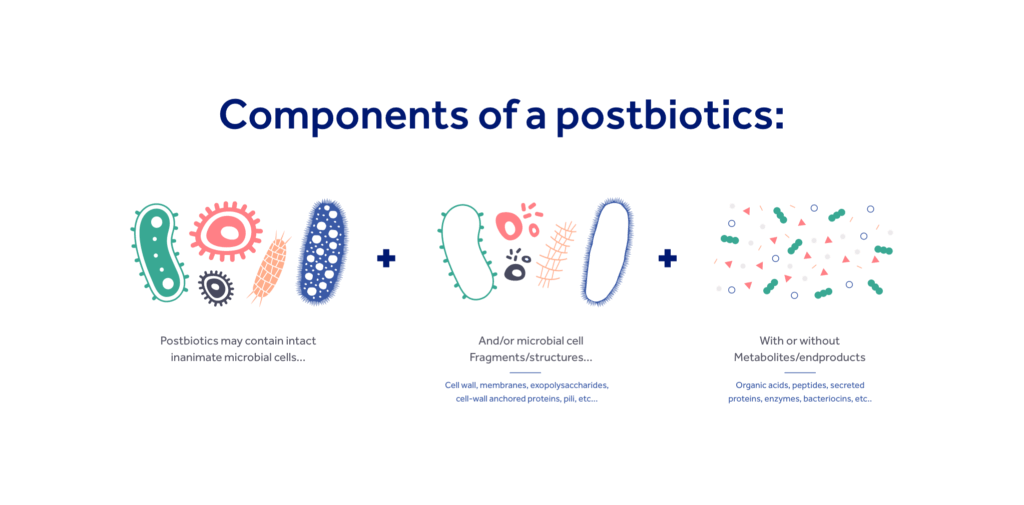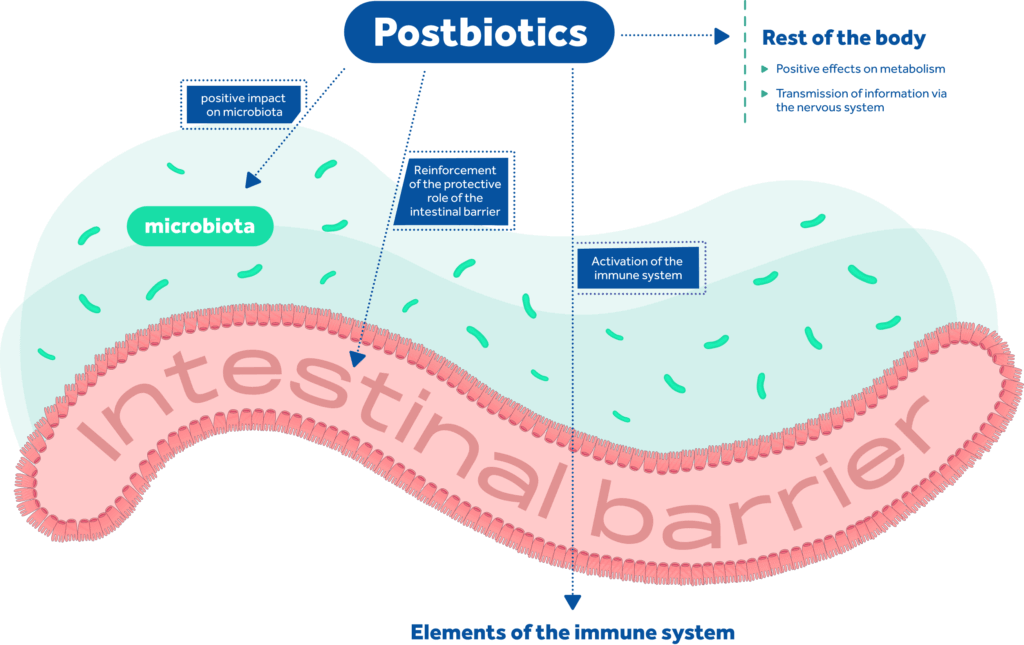What are
postbiotics?
- Intact inanimate microorganisms
- And/or fragments or structures of inactivated microorganisms
- With or without compounds from culture medium or produced by microorganisms, called metabolites.
Components of postbiotics:

To obtain such a preparation and have the right to call it postbiotic, it must meet several criteria:
Safety:
- Guaranteed positive safety profile for the user under the recommended conditions of use
Detailed composition:
- A detailed description of the composition of the postbiotics
Inertness:
- A precise description of the process to obtain inanimate bacteria
- A proof of inactivation of the bacteria
Efficiency:
- The beneficial effects on the host must be scientifically demonstrated.
How are they made?
Fermentation
Collection
Inactivation
Inactivation is the key step in postbiotics manufacturing. Different processes can be used:
- The most classic is inactivation by heat-treatment. It has been used for centuries to inactivate microorganisms. We can cite the well-known examples of pasteurization and sterilization which are used daily for the preservation of our food.
- Other types of treatments can also be used to inactivate bacterial strains for postbiotic purposes. To name but a few, we can mention pulsed light or high pressure.
How do postbiotics work?

Positive effects on metabolism: the word metabolism gathers all the mechanisms that allow our body to work properly.
What are the advantages of postbiotics?
Health benefits
Convenience
Safety
Where to find postbiotics?
Functional foods and beverages
Drugs
Food supplements
1.Salminen, S., Collado, M.C., Endo, A. et al. The International Scientific Association of Probiotics and Prebiotics (ISAPP) consensus statement on the definition and scope of postbiotics. Nat Rev Gastroenterol Hepatol (2021). https://doi.org/10.1038/s41575-021-00440-6
2.Tarrerias, A L et al. “The effect of inactivated Lactobacillus LB fermented culture medium on symptom severity: observational investigation in 297 patients with diarrhea-predominant irritable bowel syndrome.” Digestive diseases (Basel, Switzerland) vol. 29,6 (2011): 588-91. doi:10.1159/000332987